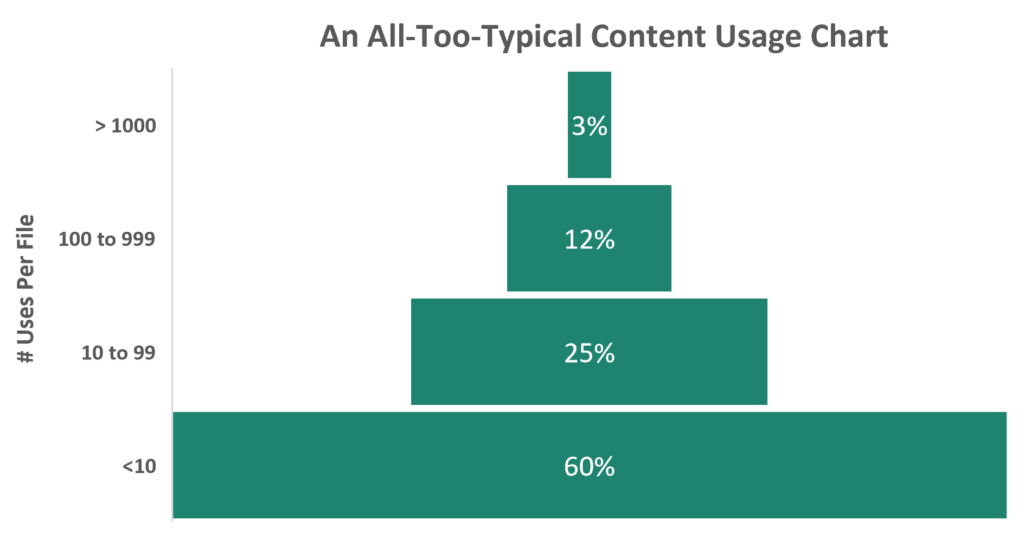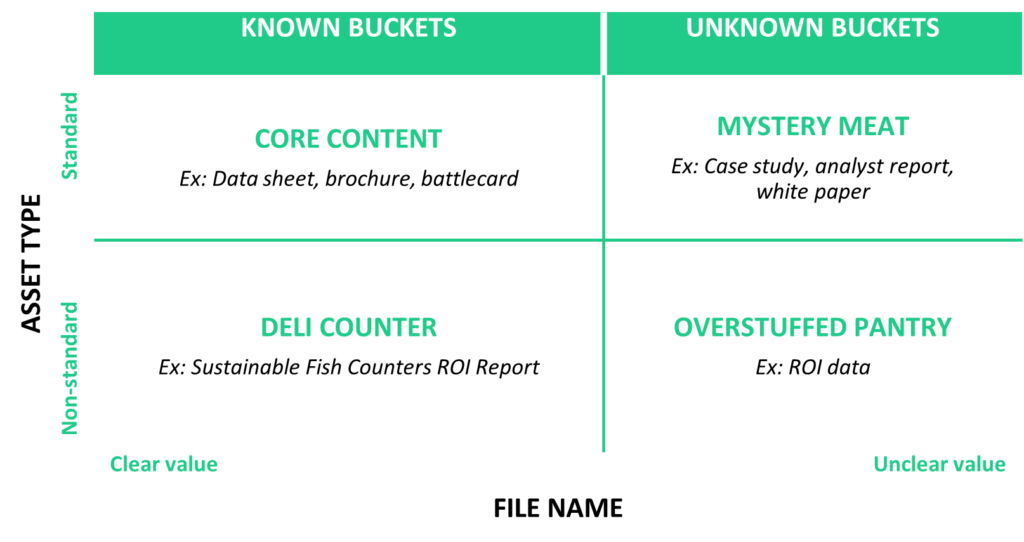Unknown Equals Unused: Fix Findability To Increase Content Usage
In the many years I’ve spent optimizing content findability, I’ve become used to hearing exchanges like this between sales and marketing — and, in fact, between any dyad of content creators and content consumers:
Sales: “We need content about this critical topic.”
Marketing: “We have that content! Why aren’t you using it?”
Poor findability is common, and it is costly. When I analyze content, I create a funnel chart to look at usage bands. The chart is almost always a pyramid. In internal systems, most files are used fewer than 10 times. In websites, it’s fewer than 100 times. Most unused content is ROT (redundant, obsolete, or trivial) that should be archived, but often a sizable fraction is content that is extremely valuable but nonstandard. It had a brief burst of usage when it was first announced and then fell into obscurity.

Solving this issue is a priority. In Forrester’s 2021 Global Marketing Survey, marketing decision-makers identified “understanding customers’ content preferences” and “increasing content usage by sales” as their main content challenges in the next two years. But why is this still an issue? Modern content systems have excellent search, filters, AI-driven recommendations, and accessible interfaces. After analyzing more content repositories than I care to count, I can tell you why in three sentences.
- Targeted content, almost by definition, is not standard.
- Nonstandard content doesn’t fit into known buckets.
- Unknown equals unused.
Is Your Sales And Marketing Content Known Or Unknown?
Whether audiences use content depends on whether they recognize the value, and that’s more likely when it fits into a known bucket. A known bucket is a type of content where the audience immediately knows what’s in it. In B2B, people know what’s in a data sheet, a brochure, and a battlecard. They don’t need fancy tricks to convince them to open it; they just go get it. This is core content. It racks up a steady stream of uses year after year, but it rarely has the piercing relevance that drives an “aha” moment.
Unknown buckets come in two types:
- Mystery meat. It has a name, but you don’t know exactly what’s in it. Case studies, analyst reports, and white papers are mystery meat. These valuable content asset types can pertain to any journey stage and any use case, and without good labeling there’s no way to tell. They can get lost among dozens or hundreds of similar content assets.
- Overstuffed pantry. There’s a ton of stuff in there, and it could be anywhere. What’s the standard content asset type for comparative insights? For third-party proof points? For ROI data? They appear in many places, making it harder for buyers, customers, sales, support, and channel partners to find what they need.
To Fix Findability, Learn From The Deli Counter
How do we rescue mystery meat and overstuffed pantry content? The secret sauce is the file name. It stays with the file wherever it goes and plays an outsize role in search and selection. I’ve seen again and again that bland, generic names — “Cheesemonger Case Study,” “Fish Market,” “Organic Grocery FAQ” — go unused. Names that convey unique value shoot to the top of the usage rankings and stay there.
Nonstandard but clearly named content is like the deli counter. You can get anything from broccoli salad to horseradish cheddar to harissa chicken, and the unpredictability doesn’t matter because it’s all well labeled. Applying the deli-counter approach, “Cheesemonger Case Study” becomes “Smoked Cheeses Triple Revenue — Togolese Cheesemonger Case Study.” “Fish Market” becomes “Global Fisheries Market Trends E-Book 2028-05-21.” “Organic Grocery FAQ” becomes “Organic Grocers — Winning Sales Strategies (Internal) — DEU.” The value to the reader is much clearer.
Effective file names are a series of fields where every word is designed for findability. They are not the same as titles. The most important topic keyword is placed at the beginning. Informational keywords throughout flesh out the value, and the content asset type is always stated. Date, version, and language identifiers are unobtrusive but present in suffixes (e.g., DEU for German).

Pick The Right People To Put It Into Practice
Fixing findability requires an owner: a digital asset librarian, a sales content management system administrator, or a content strategy and operations manager to set standards, train authors, and audit content. Trust me on this one. You would not believe how many ways smart people interpret naming guidance. When you think about it, it makes sense. Content findability is contextual. Authors know their own content. Librarians see the whole content corpus and can make sure that all the names are consistent and clear.
Try it and see. You’ll find that when it comes to content, names are anything but superficial.
